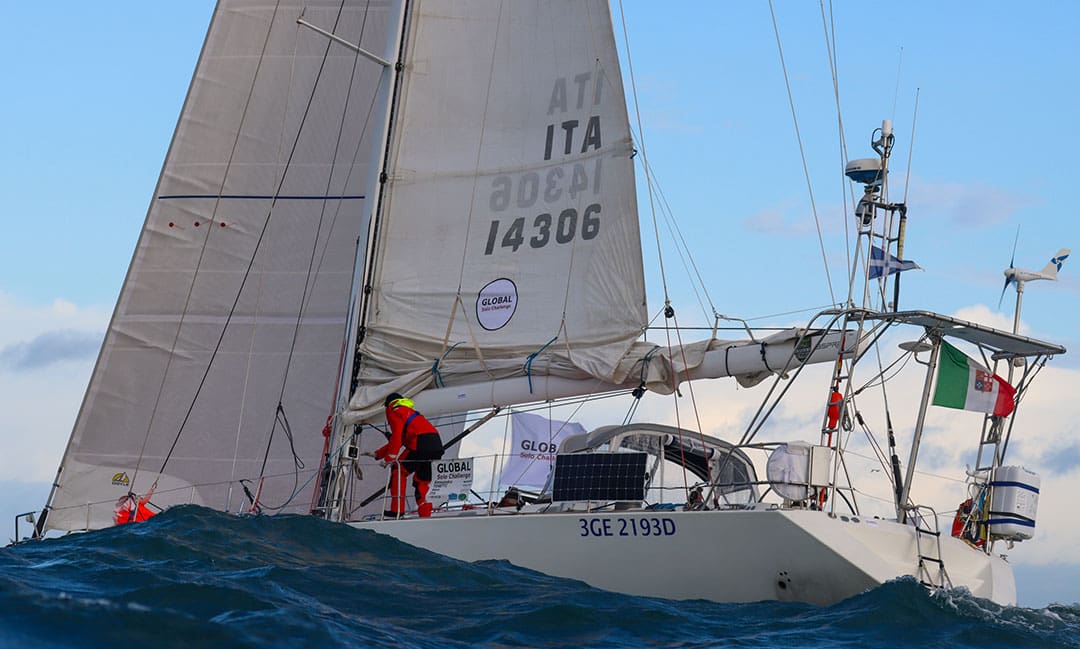
You can’t race a sailboat around the world in a single-handed event like the Global Solo Challenge without self-steering.
Before windvanes, most boat designs could balance rudder and sails so with the helm lashed the boat would keep her course. The 1968-1969 Golden Globe Race, the first ever non-stop, single-handed, round-the-world yacht race, came after effective windvane self-steering was developed for yachts. In a retro race like today’s Golden Globe that requires windvane steering, sailors can keep a desired course well enough to still be competitive, but otherwise modern solo racers depend on electric autopilots. Today’s versions are far more sophisticated than the first Autohelm produced in 1974 but they require a steady input of information from sensors, and DC power.
On the surface a mechanical unit would seem the most reliable; it gets its information from the wind that drives the boat, and doesn’t require electricity, but windvane problems plagued the 1968 racers, and even brought down three of the 16 racers in the 2022-2023 Golden Globe.
As for electric autopilots? Of the 16 racers in the current 2023-2024 Global Solo Challenge, two entrants, Dafydd Hughes and Juan Merediz, retired because of autopilot problems; Louis Robein has considered pulling into Australia to deal with his autopilot, Alessandro Tosetti and Ronnie Simpson took penalties for pulling into port to repair theirs, and Cole Brauer’s autopilot failure led to a dramatic near knockdown before she fixed it with spares at sea. She is currently in second place but concerned that further problems could leave her without a spare.
I asked Marco Nannini, organizer of the Global Solo Challenge, about requirements on self-steering. “The choice of equipment is down to the skipper,” Nannini said, “the regulations provide a framework, not an instruction manual on how to prepare the boat…with all the brands and choices we could not impose a specific setup and we’d end up being able to say little more than ‘self-steering adequate for the boat.’”
All GSC skippers started with multiple redundant systems and the issues they face are down to individual components, Nannini noted. Arguably it’s easier to carry a spare autopilot than a complete second windvane, but what if there’s no spare for the spare?

